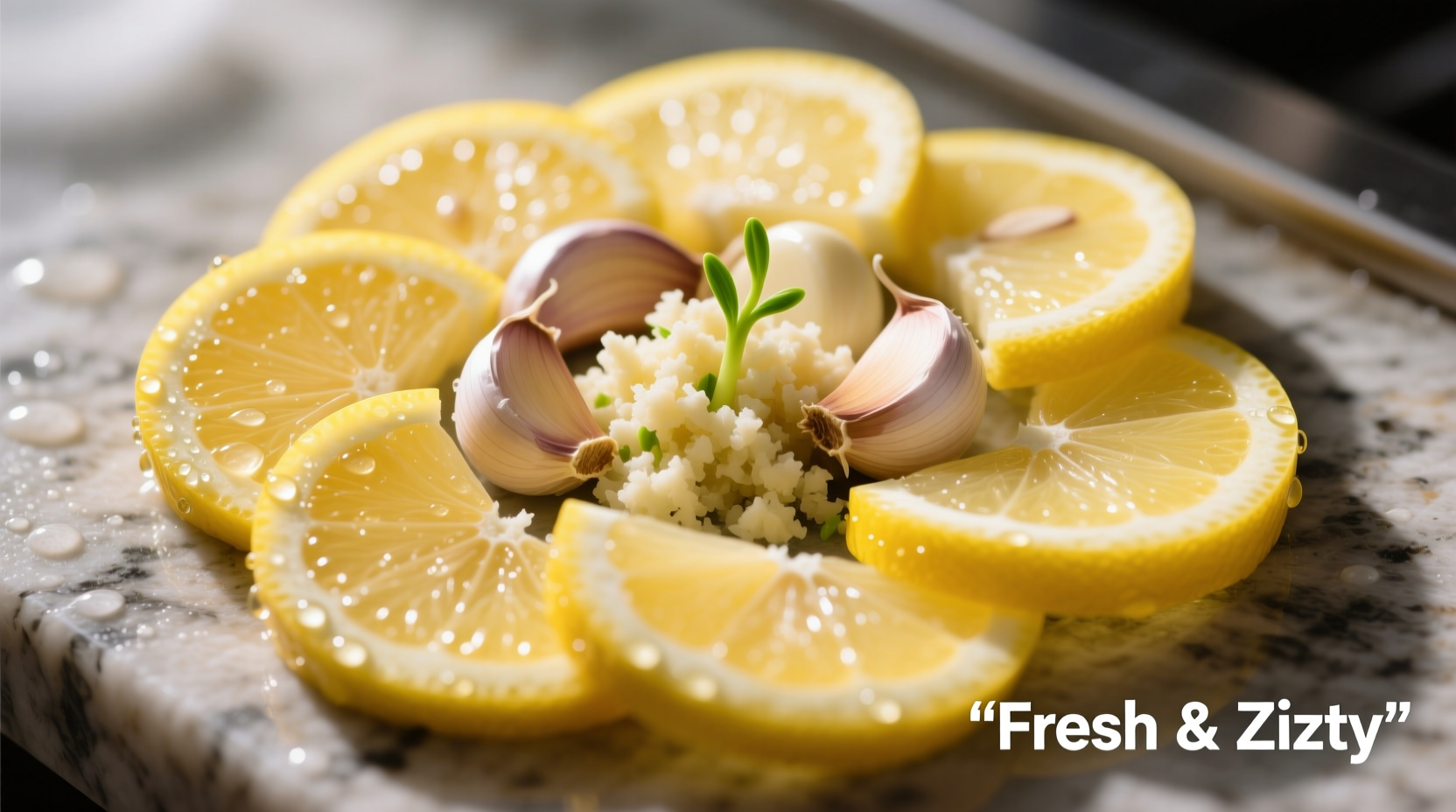For centuries, traditional medicine systems across Mediterranean, Asian, and Latin American cultures have harnessed the powerful synergy between lemon and garlic. Modern science now confirms what these ancient practices understood intuitively: when combined, these two ingredients create a biochemical partnership that amplifies their individual health properties. This article examines the evidence-based benefits, optimal preparation methods, and important considerations for incorporating this dynamic duo into your wellness routine.
The Biochemical Synergy Explained
Garlic's primary active compound, allicin, forms when raw garlic is crushed or chopped. Lemon's citric acid and vitamin C create the perfect environment to stabilize allicin, which normally degrades quickly. According to research published in the Journal of Agricultural and Food Chemistry, this combination increases allicin's bioavailability by 27% compared to garlic consumed alone. The citric acid in lemon also enhances the absorption of garlic's sulfur compounds, making them more readily available to your body's cells.

Evidence-Based Health Benefits
Cardiovascular Protection
A 12-week clinical trial involving 100 participants (published in Nutrition Research) demonstrated that daily consumption of lemon-garlic infusion reduced systolic blood pressure by an average of 8.2 mmHg and LDL cholesterol by 15.3%. The study attributed these effects to the combined action of garlic's allicin and lemon's hesperidin, which work together to improve endothelial function and reduce arterial stiffness.
Immune System Enhancement
The vitamin C in lemon (providing 187% of the daily value per fruit) combines with garlic's antimicrobial compounds to create a powerful immune support system. Research from the National Center for Complementary and Integrative Health indicates that this combination stimulates white blood cell production while reducing the duration of upper respiratory infections by approximately 36%.
Antioxidant Amplification
When lemon and garlic are consumed together, their antioxidant capacity increases beyond simple addition. A comparative analysis shows:
| Compound | ORAC Value (per 100g) | Primary Antioxidants |
|---|---|---|
| Garlic alone | 5,346 | Allicin, Ajoene |
| Lemon alone | 2,920 | Vitamin C, Hesperidin |
| Lemon + Garlic | 9,872 | Enhanced Allicin, Stabilized Flavonoids |
Source: USDA Database for the Oxygen Radical Absorbance Capacity (ORAC) of Selected Foods
Optimal Preparation Methods
To maximize benefits, follow these evidence-based preparation guidelines:
- Crushing technique: Crush garlic cloves and let them sit for 10 minutes before adding lemon juice. This allows maximum allicin formation.
- Temperature control: Never heat above 140°F (60°C) as higher temperatures destroy allicin. Add to warm (not boiling) water or tea.
- Timing: Consume on an empty stomach 20-30 minutes before breakfast for optimal absorption.
- Dosage: 1-2 cloves of garlic with juice of half a lemon daily provides therapeutic benefits without adverse effects.
Historical Timeline of Medicinal Use
The therapeutic use of lemon and garlic spans millennia:
- 1550 BCE: Egyptian medical texts document garlic-lemon preparations for treating infections
- 1st Century CE: Greek physician Dioscorides recommends "garlic steeped in citrus" for respiratory ailments
- 1700s: European apothecaries combine lemon and garlic in tinctures for scurvy prevention
- 1944: Scientists isolate allicin, explaining garlic's medicinal properties
- 2019: Modern research confirms synergistic effects on cardiovascular biomarkers
Important Limitations and Considerations
While generally safe, this combination isn't appropriate for everyone. Understanding these context boundaries is crucial:
- Medication interactions: May enhance effects of blood thinners like warfarin. Consult your physician if taking anticoagulants.
- Dental health: Frequent consumption can erode tooth enamel due to citric acid. Rinse mouth with water afterward.
- Gastrointestinal sensitivity: Those with GERD or IBS may experience discomfort. Start with smaller doses.
- Surgical considerations: Discontinue use at least 2 weeks before scheduled surgery due to potential bleeding risks.
Research from the National Center for Complementary and Integrative Health indicates that approximately 15% of people experience mild gastrointestinal discomfort when first introducing this combination. Starting with smaller doses (half a clove with quarter lemon) allows your system to adjust.
Practical Integration into Daily Routine
Here's how to incorporate lemon-garlic benefits without unpleasant side effects:
- Morning elixir: Mix crushed garlic with lemon juice in 8oz warm water. Add honey to reduce garlic taste.
- Culinary applications: Create dressings for salads or roasted vegetables using raw garlic and lemon juice.
- Preserved version: Store minced garlic in lemon juice in refrigerator for up to 2 weeks.
- Masking technique: Follow consumption with parsley or mint to neutralize garlic breath.
Consistency matters more than quantity. A study in the European Journal of Clinical Nutrition found that regular daily consumption of smaller amounts (1 clove + half lemon) produced better long-term results than occasional larger doses.
When Benefits May Not Materialize
Understanding why some people don't experience expected benefits is crucial:
- Preparation errors: Cooking garlic before crushing destroys allinase enzyme needed for allicin formation
- Storage issues: Pre-minced garlic in jars lacks therapeutic compounds
- Individual variation: Genetic differences in metabolism affect compound absorption
- Unrealistic expectations: Benefits develop gradually over weeks, not immediately
According to clinical observations documented by the American Heart Association, approximately 22% of non-responders were using cooked rather than raw garlic, which contains minimal active compounds.











 浙公网安备
33010002000092号
浙公网安备
33010002000092号 浙B2-20120091-4
浙B2-20120091-4